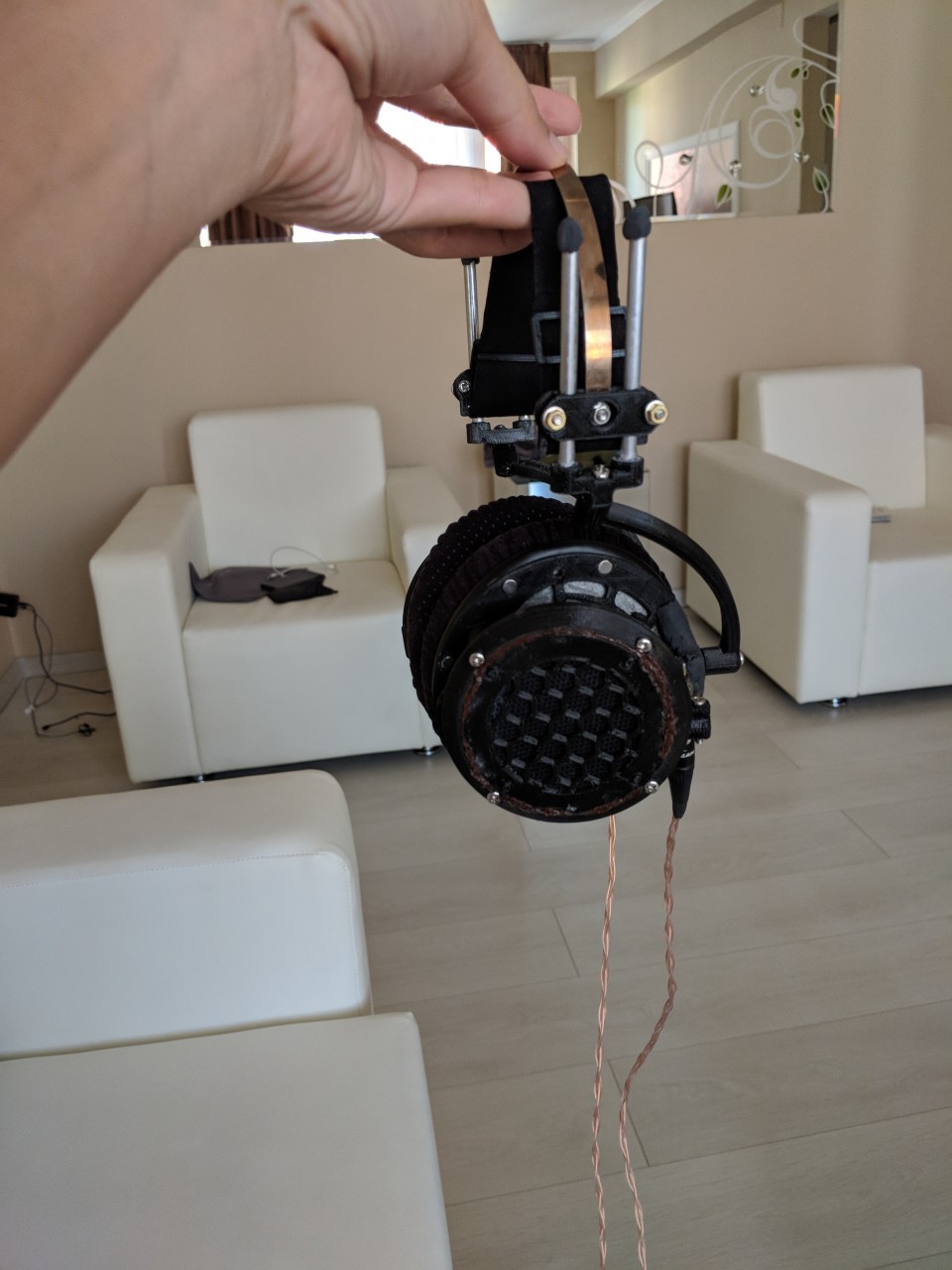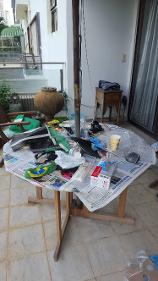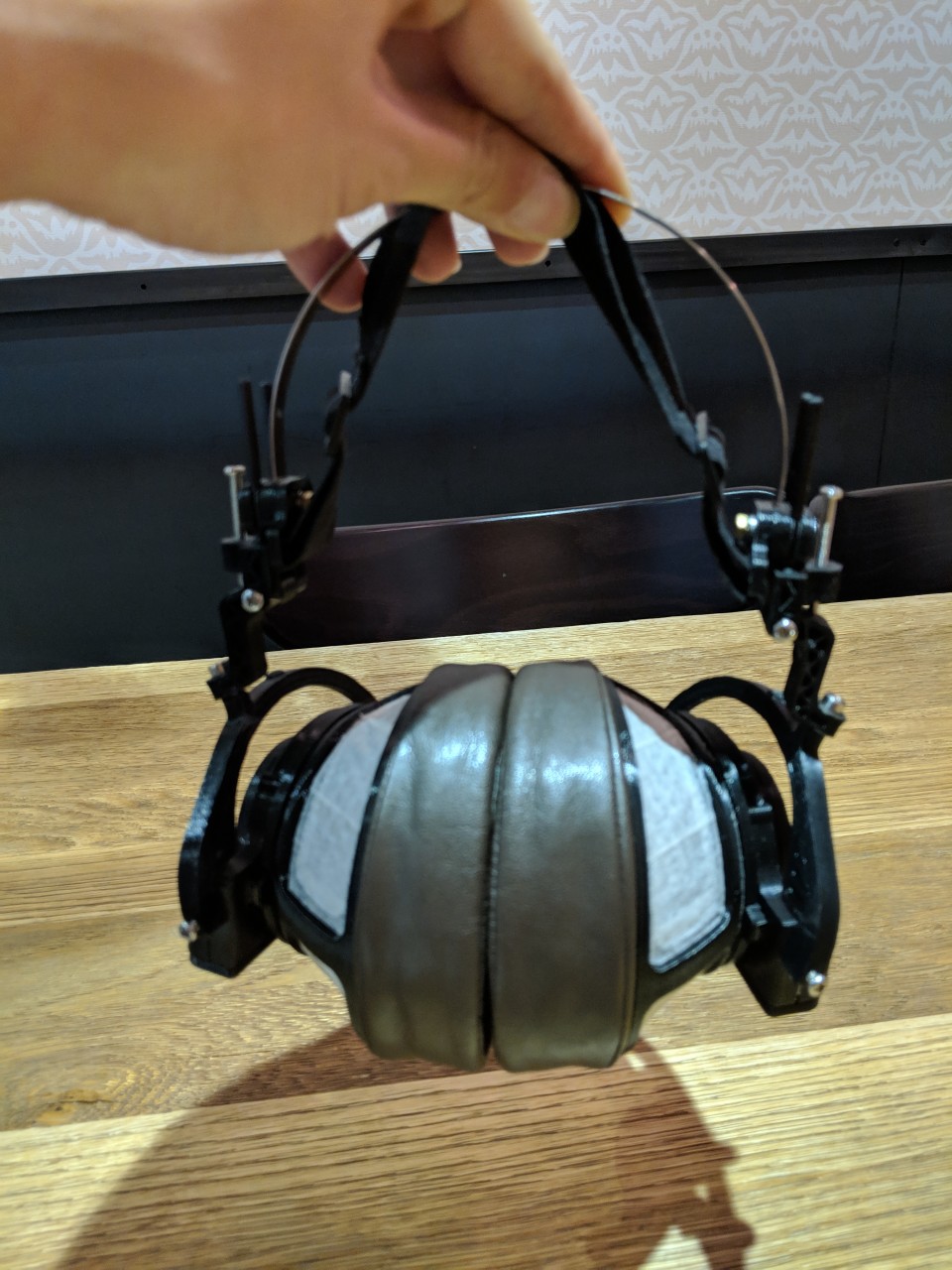frank2908
100+ Head-Fier
- Joined
- May 6, 2009
- Posts
- 374
- Likes
- 156
My latest version, V4
I completed this last year actually but never posted since I traveled round the world for 1 year, so left this baby at home and just picked them up last month. I have a new design but my 3d printer broke and I'm on the road again,anw these sounds great with Chord Mojo

It's the first time I switch to open ear design, and there is a removable magnetic cap to convert to closed (not shown in photo). There is a dust screen cut off from stax sr007 earpads fabric. The driver cover is printed with honeycomb pattern


On the baffle and earpads rings there are magnets so I cant swap pads easily. Now I have the diy Stax pads (Sr007 with memory foam fill ) and Shure Alcantara earpads. The Stax produces a better soundstage and a bit more comfy because the memory foam I used is very soft, but if I'm not in a room with AC, then I switch to Alcantara pads. The alcantara has a bit smaller soundstage but better bass (tiny bit)

The baffle is left open and sealed with 3M Micropore tape, which has the best balance between sealing (more base) and open (soundstage) IMO.
The original idea of making the headphones with huge closed cup like R10 and HD800 driver failed, not because of the cup but because the volume between the driver and the ear was not big enough, and the hd800 are designed for this huge volume. Now I plan for next build to be convertible between open/closed and over ear/ on ear. When you have an expensive headphones and a Chord MOjo, why do you have to buy another portable headphones? I believe to make a convertible portable hd800 would sound at least better than any $500 portable headphones anyway
I completed this last year actually but never posted since I traveled round the world for 1 year, so left this baby at home and just picked them up last month. I have a new design but my 3d printer broke and I'm on the road again,anw these sounds great with Chord Mojo

It's the first time I switch to open ear design, and there is a removable magnetic cap to convert to closed (not shown in photo). There is a dust screen cut off from stax sr007 earpads fabric. The driver cover is printed with honeycomb pattern


On the baffle and earpads rings there are magnets so I cant swap pads easily. Now I have the diy Stax pads (Sr007 with memory foam fill ) and Shure Alcantara earpads. The Stax produces a better soundstage and a bit more comfy because the memory foam I used is very soft, but if I'm not in a room with AC, then I switch to Alcantara pads. The alcantara has a bit smaller soundstage but better bass (tiny bit)

The baffle is left open and sealed with 3M Micropore tape, which has the best balance between sealing (more base) and open (soundstage) IMO.
The original idea of making the headphones with huge closed cup like R10 and HD800 driver failed, not because of the cup but because the volume between the driver and the ear was not big enough, and the hd800 are designed for this huge volume. Now I plan for next build to be convertible between open/closed and over ear/ on ear. When you have an expensive headphones and a Chord MOjo, why do you have to buy another portable headphones? I believe to make a convertible portable hd800 would sound at least better than any $500 portable headphones anyway
































